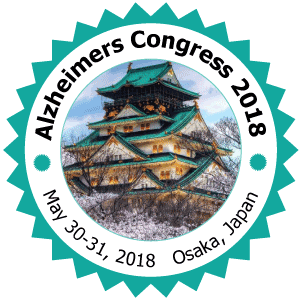
Jun Liu
Sun Yat-sen University
Title: Novel Therapeutic Strategies for Alzheimer’s Disease —Neurotrophy and Neurorestoration
Biography
Biography: Jun Liu
Abstract
Alzheimer’s disease(AD) is a neurodegenerative disorder mainly characterized by β-amyloid deposit, tau hyperphosphorylation and neuron loss with no curative treatments. In recent years, the main efforts of multinational pharmaceutical companies have been focused on reducing the aggregation of Aβ and tau proteins but with repeated defeats. According to statistics of Adis R&D, between 1998 and 2014, major pharmaceutical companies launched a total of 123 drugs for AD but only three drugs and one combination therapy program have been approved by the FDA. However, without exception, none of these 123 drugs can cure AD and even delay the progression of the disease. So we should shift our focus from alleviating the AD-like pathologies to neuroprotection, which means the preservation of neuronal structure and/or function. As far as we know, there are some therapeutic strategies of neuroprotection for AD, such as the application of NMDA receptor antagonists, acetylcholinesterase inhibitors(ACEIs), anti-inflammatory agents, antioxidants, neurotrophins and Chinese medicine and so on. Our research group has found that neurotropin (a non-protein bioactive agent extracted from rabbit inflamed skins inoculated with Vaccinia virus vaccine), GQDG (graphene quantum dot conjugated with neuroprotective peptide —glycine-proline-glutamate), edaravone, EGb761(Ginkgo Biloba Extract) and β-sitosterol exerted potent neuroprotective effects in AD. In conclusion, a single cure for AD is unlikely to be found and multi-target therapies should be addressed.

